- Plan V.
- Posts
- 🤌🏽🫒Why Puglia's Market Tomatoes Taste Like Childhood (And Where to Find Them)🇮🇹🍅
🤌🏽🫒Why Puglia's Market Tomatoes Taste Like Childhood (And Where to Find Them)🇮🇹🍅
Welcome to two markets in Puglia where tourists are the exception, not the rule, and where someone's nonna is making pasta by hand while she gossips with her neighbor.
Learn Business Buying & Scaling In 3 Days
NOVEMBER 2-4 | AUSTIN, TX
“Almost no one in the history of the Forbes list has gotten there with a salary. You get rich by owning things.” –Sam Altman
At Main Street Over Wall Street 2025, you’ll learn the exact playbook we’ve used to help thousands of “normal” people find, fund, negotiate, and buy profitable businesses that cash flow.
Tactical business buying training and clarity
Relationships with business owners, investors, and skilled operators
Billionaire mental frameworks for unlocking capital and taking calculated risk
The best event parties you’ve ever been to
Use code BHP500 to save $500 on your ticket today (this event WILL sell out).
Click here to get your ticket, see the speaker list, schedule, and more.
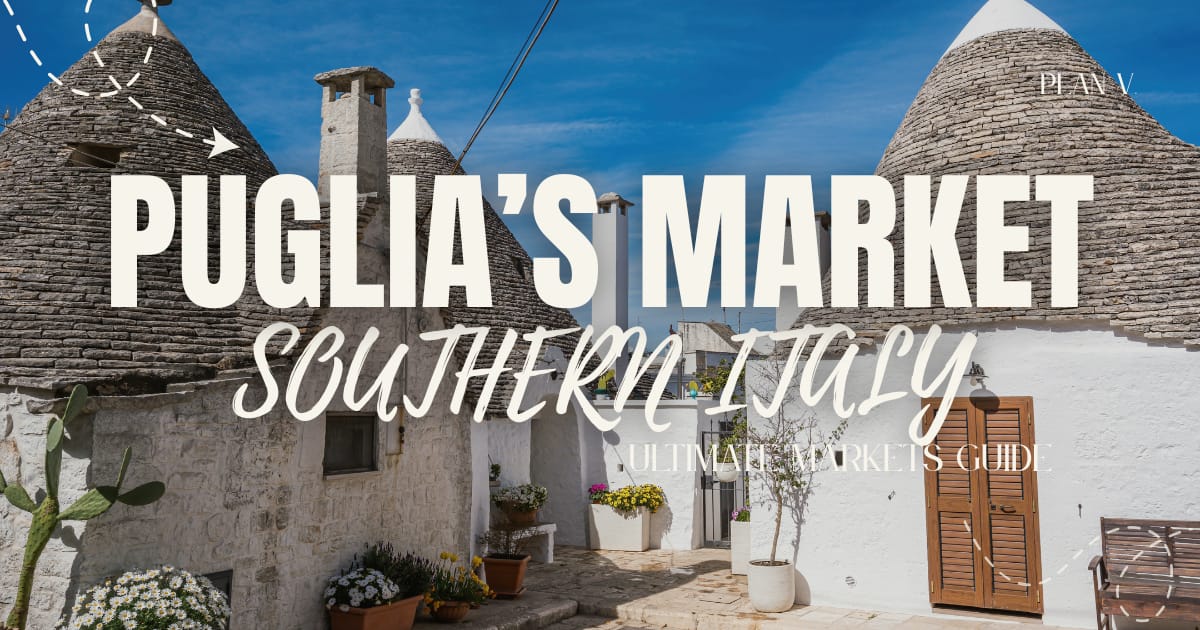
Remember that feeling when you bite into a tomato that actually tastes like a tomato? The kind that makes you close your eyes for a second because it's so good it demands your full attention? That's what waiting for you in Puglia's food markets.
This is about standing elbow-to-elbow with Italian grandmothers who are fiercely negotiating over fish prices at 7 AM. About vendors who'll stop mid-sale to teach you the only acceptable way to cook orecchiette. About discovering that the best part of Italy isn't in a guidebook—it's in these chaotic, beautiful, delicious morning rituals.

First of All: Practical Tips for All Markets
Bring cash. Many small stalls don't accept cards. Get money before you go.
🥤What to Bring
| 🍅 Smart Shopping
|
Market Etiquette 🇮🇹🤌🏽
Don't touch fruit without permission; let the vendor choose for you.
Respect lines, Italians may seem chaotic, but there's an implicit order.
Don't compare prices out loud.
Say "buongiorno" and "grazie".
Fact-based news without bias awaits. Make 1440 your choice today.
Overwhelmed by biased news? Cut through the clutter and get straight facts with your daily 1440 digest. From politics to sports, join millions who start their day informed.
The 2 Markets You Actually Need to Visit
Mercato di Santa Scolastica 🍅
This covered market opened in the 1960s, which makes it "new" by Italian standards. But don't let the functional architecture fool you—this place pulses with centuries of tradition. Many vendors are third-generation, selling from the same stalls their grandparents did. They know every secret about their products, and if you're friendly, they'll share them with you.
The fish here is so fresh it's practically jumping. Look for sea urchins (ricci), Adriatic anchovies, fresh octopus, and the famous crudo di mare (raw seafood) that locals eat like it's their morning coffee.
Opening Hours
Monday to Saturday: 6:00 AM - 3:00 PM
Sundays: Occasional special openings
Insider tip: Show up between 7:30-8:30 AM when fishermen are still unloading the day's catch and the market is at its most alive.
🍅 Fruits & Vegetables
| 🧀 More Food
Fresh burrata here is a religious experience. You'll also find caciocavallo hanging like sculptures, ricotta forte (so strong it'll make you cry, but it's delicious), and mozzarella made that morning.
Altamura DOP bread is royalty here. Huge loaves with crispy crust and crumb that stay fresh for days. Buy taralli (salty crackers with fennel or pepper) for the road. |
You can’t miss:
Barese breakfast: Buy freshly baked focaccia from a stall and eat it on a bench while watching the market wake up.
Spontaneous cooking lesson: Vendors here love to teach. Ask how to prepare something and you'll get a masterclass for free.
The coffee ritual: After the market, head to a nearby bar for caffè con latte di mandorla (coffee with almond milk).
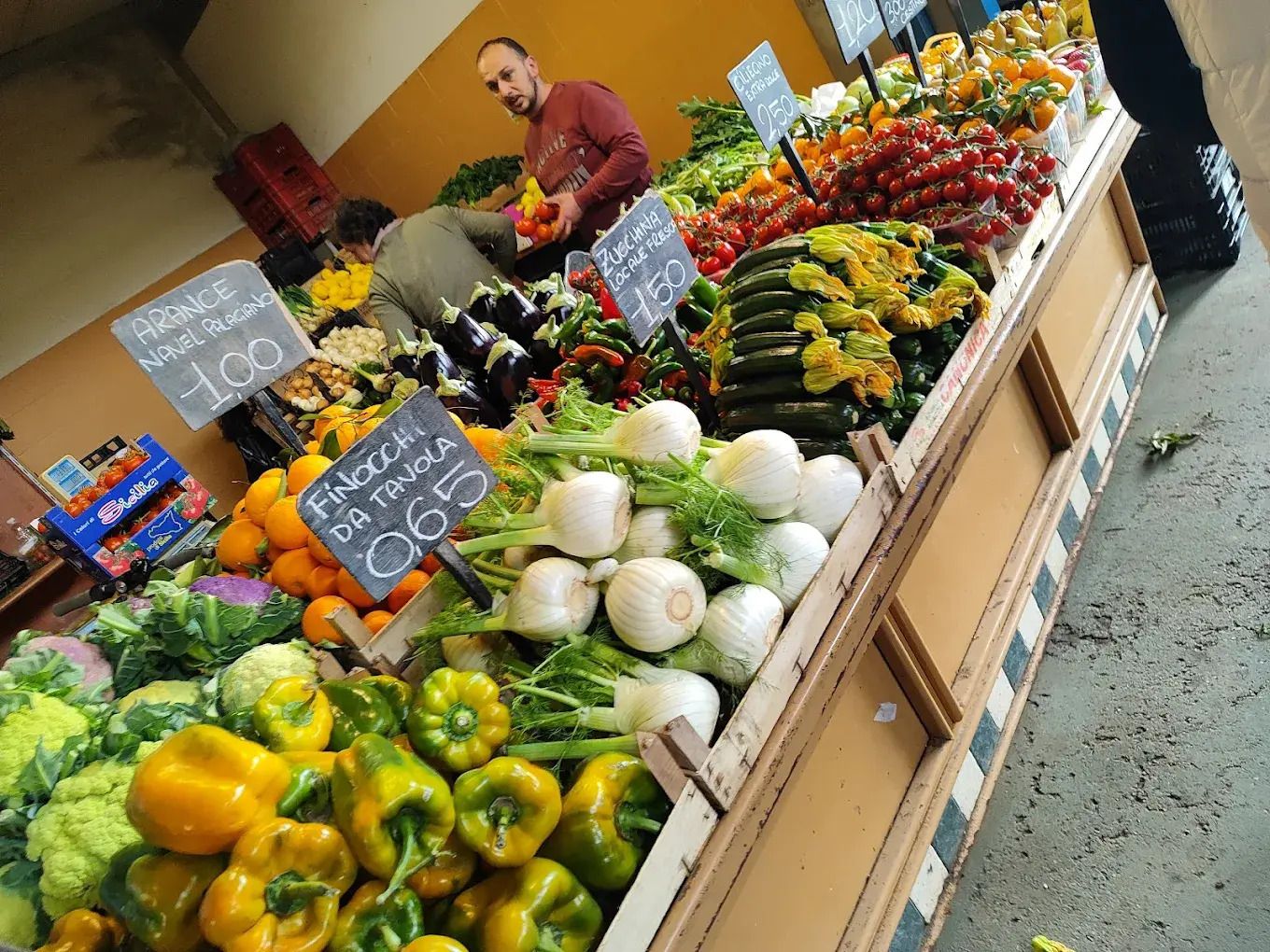
Mercato Settimanale di Ostuni (Via degli Emigranti) 🫒
Ostuni's weekly market is an institution dating back to medieval times, when merchants from all over the region gathered on Saturdays. What makes this market special is that Ostuni, the "white city," has always been a meeting point between coast and inland, between fishermen and farmers.
Today, this market maintains that tradition of diversity. It's where inhabitants of the masserie (fortified farmhouses) from the countryside come to sell their organic products, and where fishermen from the nearby coast bring their catch.
Opening Hours
Every Saturday of the year: 8:00 AM - 1:00 PM
Useful tip: October-March may have some Saturdays with fewer stalls if the weather's bad, but the market never fully closes.
Insider tip: Ostuni locals have a ritual. After shopping, many gather in nearby bars for a bianco (local white wine) and fried panzerotti. Join them.
🍅 Fruits & Vegetables
| 🫒 More Food
|
Best Time to Visit Ostuni
Spring (April-June): Ostuni is spectacular with almond blossoms.
Summer (July-August): Arrive early because by 10 AM it's already hot.
Fall (September-October): The perfect season. Pleasant weather, fewer tourists, and incredible fall products.
Winter (Nov-March): The market is smaller but more authentic. Tourists disappear, and that's when you really see how locals live.
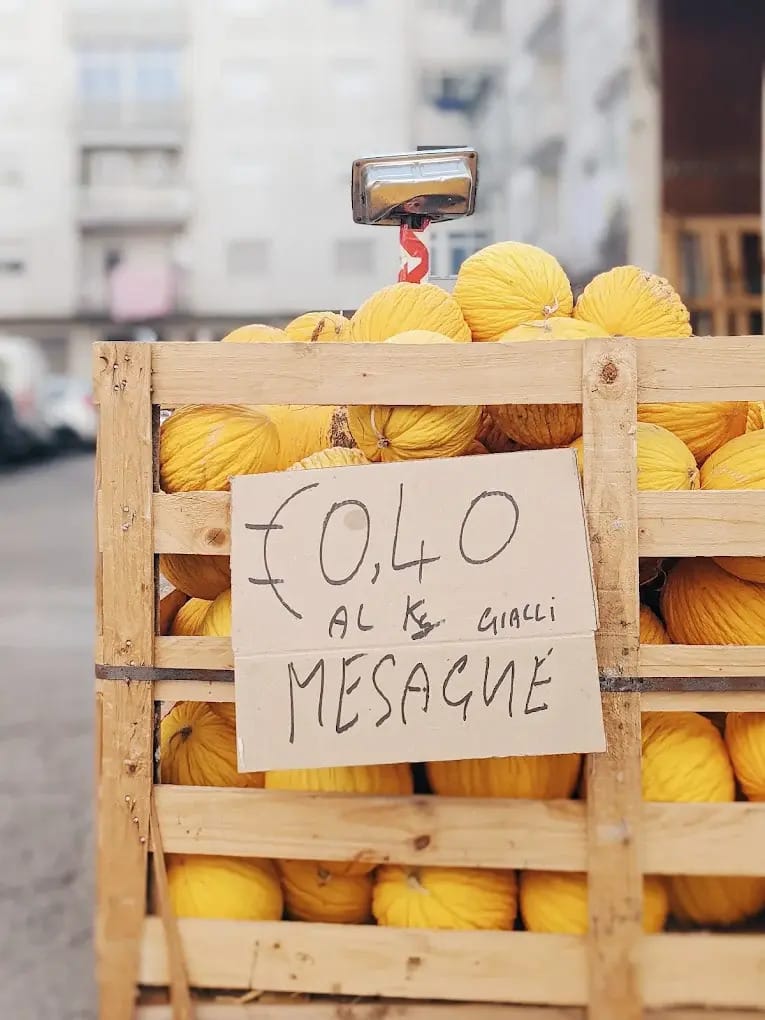
SPANISH SECTION:
San Gimignano: Siena, Italia (guía definitiva)
Conocido, principalmente, por ser productor de azafrán y vino blanco, San Gimignano, en Siena, Italia, es más que un pueblo productor. Aquí la historia comenzó en la Edad Media —quizá antes— y poco a poco se convirtió en lo que es hoy: Patrimonio de la Humanidad por la UNESCO.
Se ubica a 56 km al sur de Florencia en el valle de Elsa. Se independizó en 1199 y, para los siglos XI y XIII, las familias de la alta burguesía, que controlaban el comercio en la región, construyeron casas-torre fortificadas. Se dice, que eran al menos, 72. Hoy día solo se conservan 14.
The Best Times of Year to Visit Puglia
Spring (April - June) ⭐⭐⭐⭐⭐
Best season for markets.
Temperature: 59-77°F makes it perfect for walking.
Products: Artichokes, asparagus, fava beans, strawberries, and cherries.
Advantages: Markets are full without being crowded.
Unique: In May, many towns have food fairs.
Summer (July - August) ⭐⭐⭐
Intense but vibrant.
Temperature: 82-95°F just for seriously hot lovers.
Products: Tomatoes in their glory, melons, eggplants, figs.
Advantages: Maximum energy, summer festivals.
Disadvantages: Very hot, more tourists, some locals close in August.
Tip: Get to the market at 7 AM, not 10 AM.
Fall (September - October) ⭐⭐⭐⭐⭐
The perfect secret moment.
Temperature: 68-82°F is ideal for being comfortable.
Products: Grapes, fresh olives, mushrooms, prickly pears, pomegranates.
Advantages: Tourists leave, locals return. It's grape and olive harvest season.
Unique: Special fall product markets, sagre (food festivals).
Winter (November - March) ⭐⭐⭐
For the authentic traveler.
Temperature: 46-59°F cool but not cold.
Products: Incredible citrus, broccoli rabe, fennel, cauliflower.
Advantages: Zero tourists, local prices, the real Puglia.
Disadvantages: Some markets are smaller, some rainy days.
Bonus: Christmas markets in December.
Friendly Reminder 🤌🏽
Puglia's markets aren't just places to buy food. They're living theaters where daily life in Southern Italy plays out. You'll see grandmothers fiercely haggling over half a kilo of tomatoes, kids running between stalls, and vendors who sound like opera singers announcing their products.
Don't rush. That's the secret of slow travel. Sit on a bench with your focaccia, observe, listen to the dialects mixing together, and smell the fresh products. Accept when a vendor offers you an olive to taste. Ask how to cook something you've never seen.
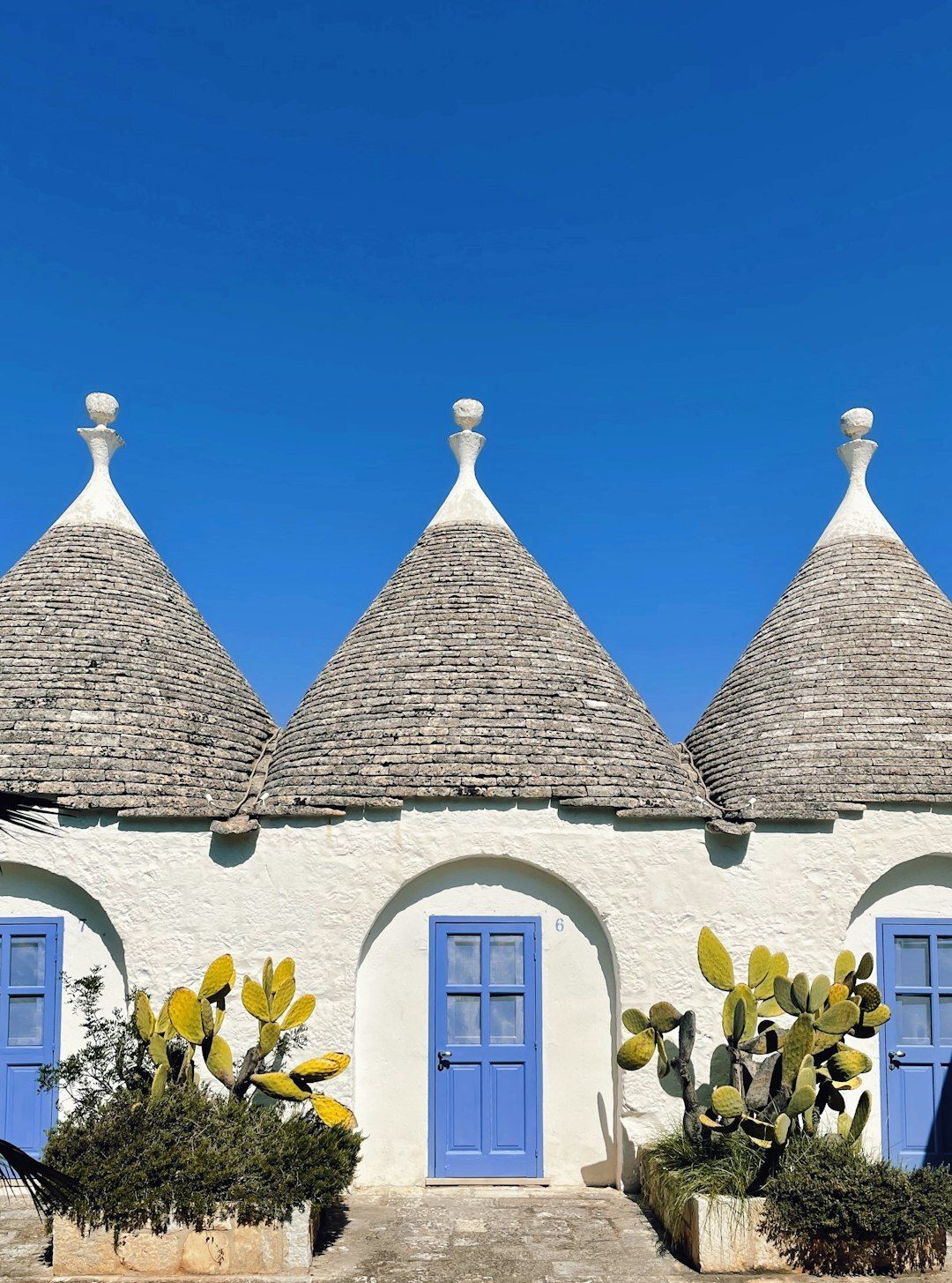
See you next time,

Fact-based news without bias awaits. Make 1440 your choice today.
Overwhelmed by biased news? Cut through the clutter and get straight facts with your daily 1440 digest. From politics to sports, join millions who start their day informed.


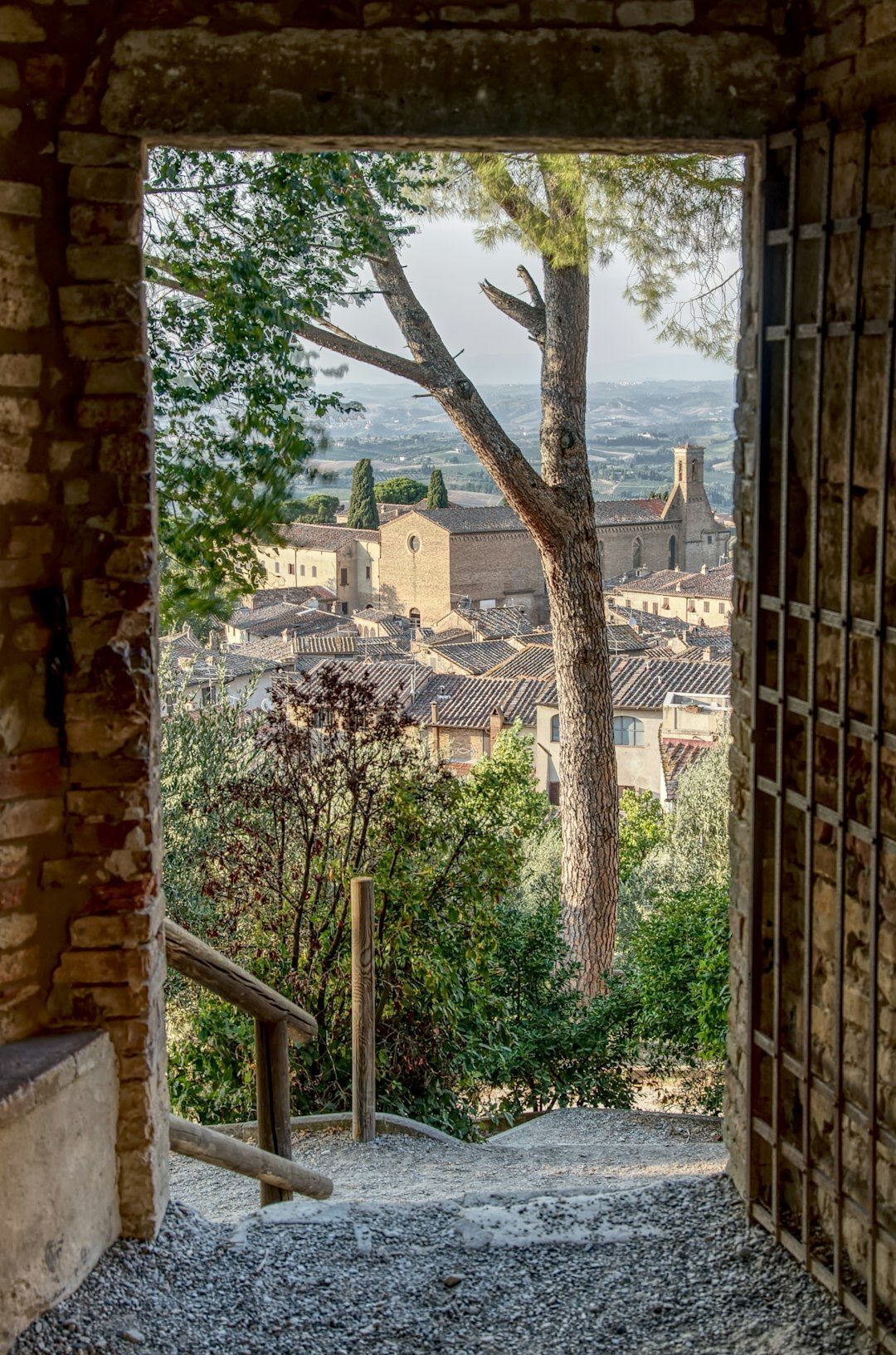

Reply